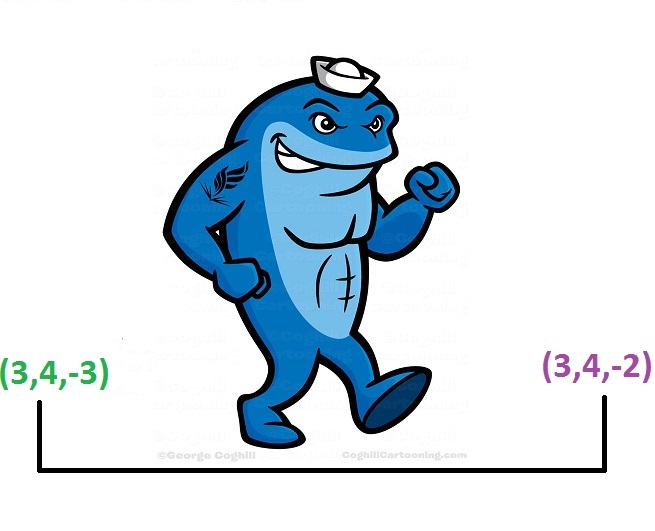3D Grid Walk

You start at the point in a Cartesian coordinate system.
Every second you move randomly one unit in any of the six directions available to you.
What is the expected value for the number of seconds it will take for you to land on a point where , and are integers .
Clarification : You can go into any octant of the 3D Cartesian coordinate system. i.e. Any or all of , , and can be negative.
Image credit: blog.coghillcartooning.com
The answer is 33.
This section requires Javascript.
You are seeing this because something didn't load right. We suggest you, (a) try
refreshing the page, (b) enabling javascript if it is disabled on your browser and,
finally, (c)
loading the
non-javascript version of this page
. We're sorry about the hassle.
By symmetry there are only three unique expectation values in the problem.
They are represented by the expectation values from the following points:
( 1 , 0 , 0 ) , ( 1 , 1 , 0 ) , ( 1 , 1 , 1 )
Let E 1 through E 3 be defined as the expected value for the number of moves it would take to get to ( 3 l , 3 m , 3 n ) for integral m and n from each of these locations respectively.
From each grid point the expectation value is given by E = 1 + 1 / 6 ∗ (sum of all six neighboring expectation values)
So, we have the following set of linear equations:
E 1 = 1 + ( 1 / 6 ) ( E 1 + 4 E 2 ) E 2 = 1 + ( 1 / 6 ) ( 2 E 1 + 2 E 2 + 2 E 3 ) E 3 = 1 + ( 1 / 6 ) ( 3 E 2 + 3 E 3 )
Sovling for E 3 , this gives, E 3 = 3 3